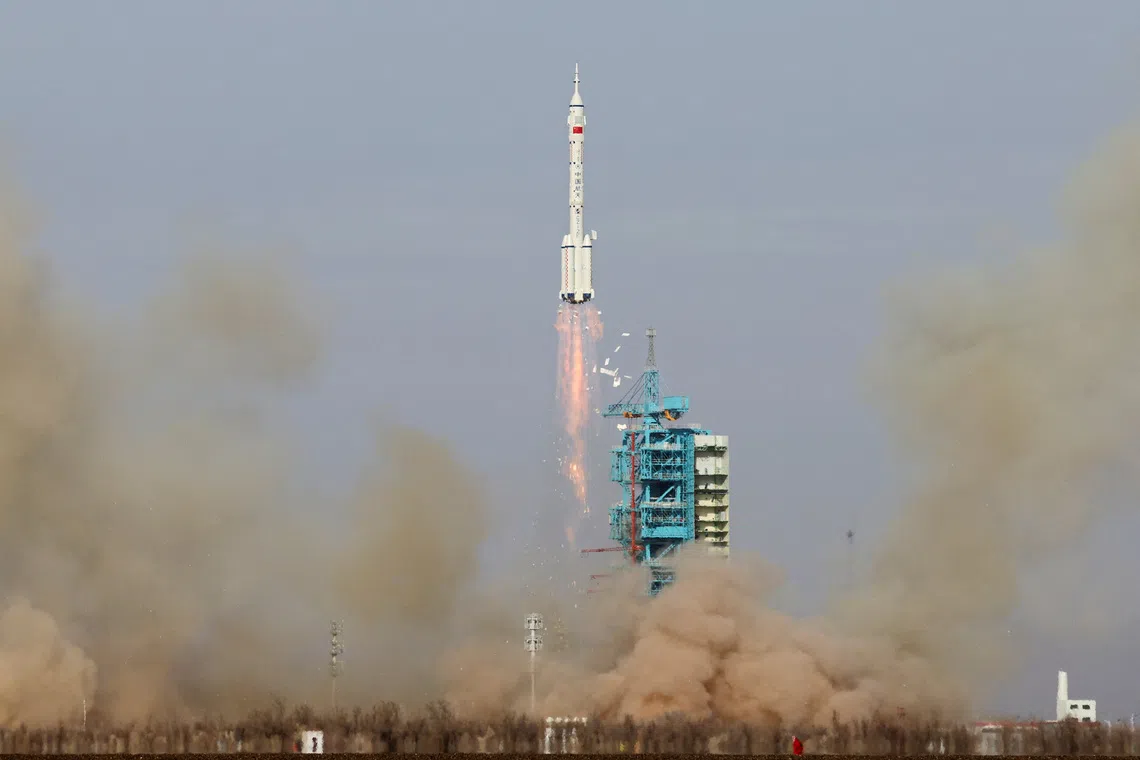China's Emergency Tiangong Space Station Mission: Shenzhou-22 Launched to Address Debris Damage & Ensure Crew Safety
 China
Space
China
Space

China successfully launched the unmanned Shenzhou-22 to its Tiangong space station after space debris damaged Shenzhou-20, threatening crew safety. The emergenc
China's Urgent Space Rescue: Shenzhou-22 Launched to Tiangong After Debris Incident
China successfully executed its inaugural emergency space launch on November 25, dispatching the unmanned Shenzhou-22 spacecraft to its Tiangong space station. This swift mission was critical to mitigate safety risks following damage sustained by another vessel in orbit earlier in November.
Launch and Successful Docking
The Shenzhou-22, carried by a Long March-2F rocket, lifted off from the Jiuquan Satellite Launch Centre in north-west China at 12:11 PM. The China Manned Space Agency (CMSA) confirmed the launch as a "complete success," with the spacecraft seamlessly separating from its rocket and achieving its designated orbit. Visuals released by state broadcaster CCTV captured the rocket's ascent against the Earth's backdrop.
By 3:50 PM, the Shenzhou-22 had successfully docked with the permanently inhabited Tiangong station.
The Cause: Space Debris Threatens Crew Safety
This urgent dispatch was necessitated after the Shenzhou-20 vessel, intended to return three Chinese astronauts to Earth on November 5, was rendered unfit for re-entry. Its return capsule window had cracked, likely due to an impact from space debris, according to CMSA suspicions.
The damage left the Tiangong crew in a precarious position. The only other flightworthy vessel, Shenzhou-21, had just arrived in late October with a new trio of astronauts and was prematurely deployed by space authorities on November 14. This left the station's crew without a safe return vehicle for 11 days. The arrival of Shenzhou-22 effectively resolved this critical safety gap.
Crucial Supplies and Future Plans
He Yuanjun, a CMSA official, remarked on the significance of this unprecedented launch for China, expressing hope it would be a rare occurrence in humanity's space endeavors. Beyond providing a crucial return vehicle, Shenzhou-22 also delivered vital provisions to Tiangong. Its cargo included essential medical supplies, spare parts for the station, and specialized equipment to repair the cracked window of the Shenzhou-20, which remains docked. Astronauts also received fresh produce, chicken wings, steak, and cake, all ready to be prepared in the station's "space oven."
The Shenzhou-22 is scheduled to remain docked until approximately April 2026, when it will facilitate the return of the Shenzhou-21 crew to Earth. Since 2021, China's Shenzhou missions have consistently delivered trios of astronauts for six-month assignments on Tiangong.
China's Rapid Response & Global Context
China's rigorous safety protocols mandate that a backup carrier rocket and Shenzhou spacecraft are always on standby. This preparedness allowed the space authorities to execute the emergency launch in a mere 16 days, significantly faster than the usual 45-day timeline for Shenzhou missions.
The incident highlights the inherent risks of space travel, drawing parallels to a 2024 event where two NASA astronauts endured a nine-month extended stay on the International Space Station due to a propulsion fault in their Boeing Starliner craft. They eventually returned aboard a SpaceX capsule. Both the US and China are intently observing each other's operational protocols and technological advancements as they push towards their shared goal of landing astronauts on the Moon by 2030.